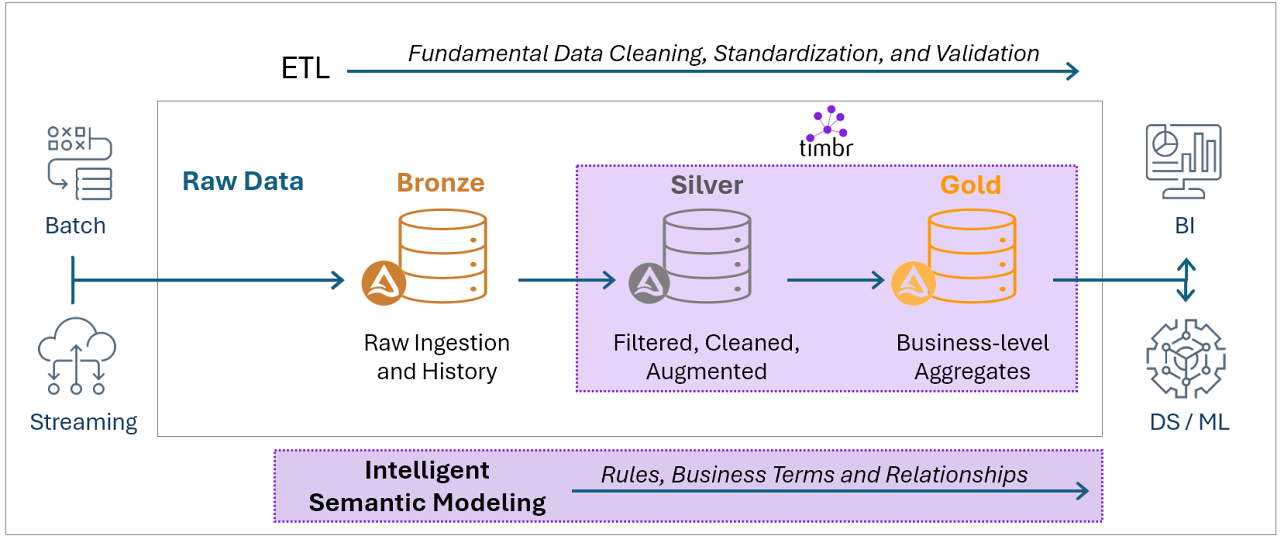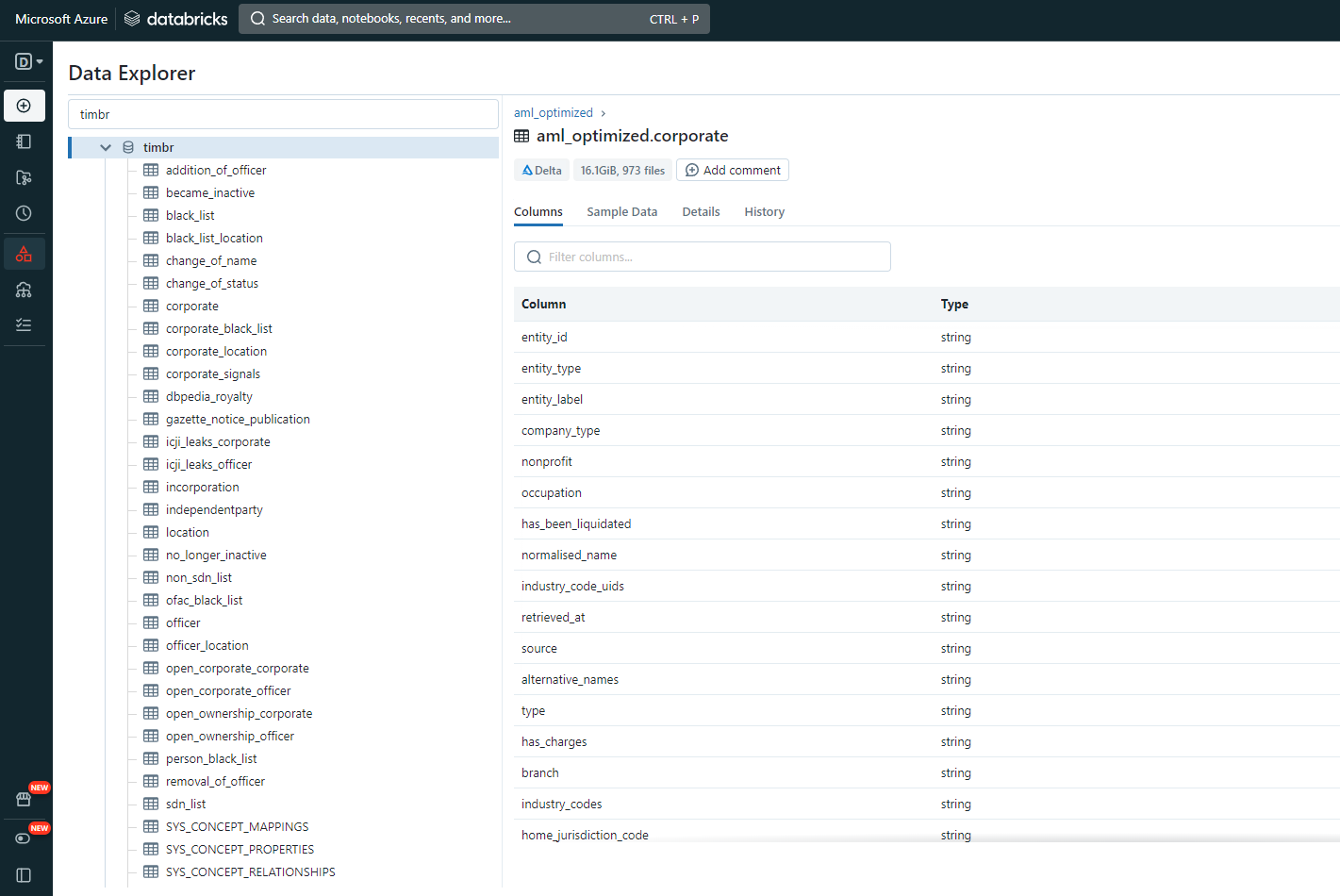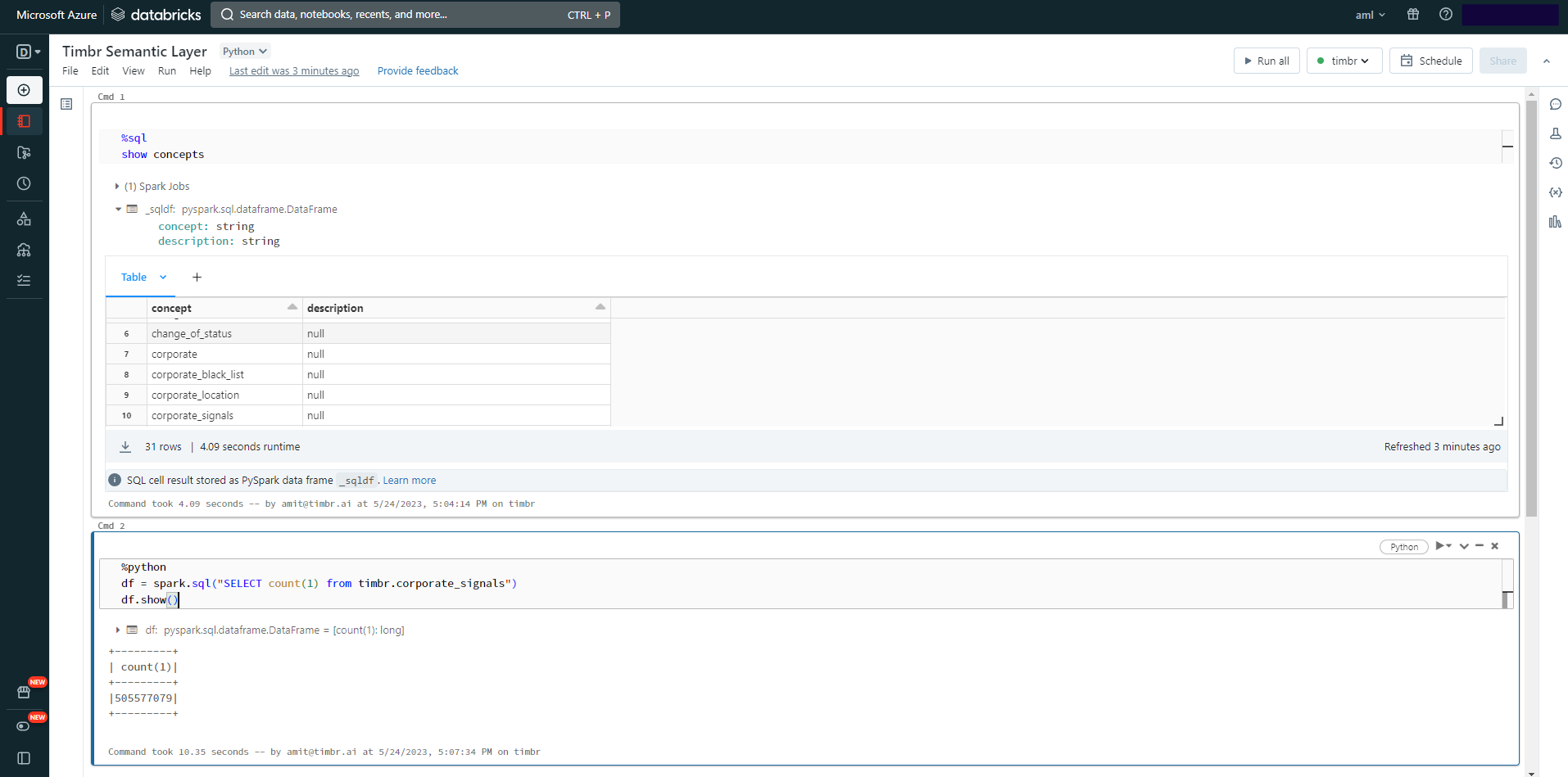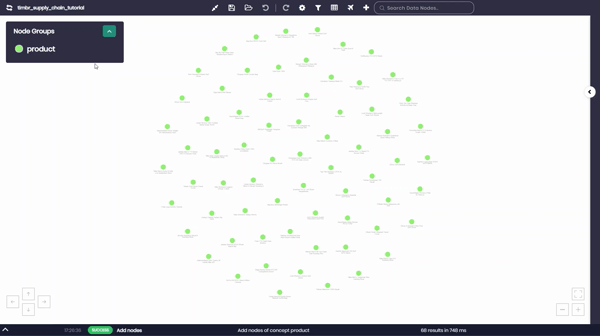USE CASE
Databricks Semantic Layer
Timbr turns Databricks into a scalable knowledge graph by combining intelligent semantic modeling and relationships with Databricks’ advanced analytics capabilities.
It integrates natively with Unity Catalog and supports fully declarative semantic model definitions directly within Databricks notebooks, enabling users to build and manage ontologies as part of their everyday workflows.
REFERENCE ARCHITECTURE
Timbr embeds as a semantic layer within Databricks Lakehouse creating a seamless, connected data environment that simplifies workflows and unlocks actionable insights.
BEHIND THE USE CASE
Timbr-Databricks integration offers a powerful solution for creating and utilizing scalable semantic data models in big data environments to efficiently integrate, manage, and share data across teams.
TUTORIAL VIDEO
Creating a Databricks Semantic Lakehouse is simple. Watch how Databricks connects as a data source in Timbr, how Delta Tables map to the semantic data model, and how to explore the data as a connected graph.
BEHIND THE USE CASE
Timbr seamlessly integrates with Databricks’ Notebook enabling fully declarative definition of semantic models to efficiently manage and share data withoout leaving the Databricks environment.
Accelerate Databricks' Data Engineering with Fully Declarative Definition of Semantic Models
Timbr’s native integration with Databricks enables fully declarative definition of semantic models, so business context, relationships and business rules are defined as part of the data pipeline within a single development environment.
This integrated approach allows for a more dynamic and context-aware data quality assurance, ensuring data integrity and consistency with business logic, and offers several advantages:
1. Unified data quality management: Data cleaning and validation occur not just during ETL, but continuously as data is accessed and analyzed through the semantic layer.
2. Business-context preservation: The semantic model ensures that data transformations and validations align with business meanings and relationships.
3. Flexible rule application: Business rules can be adjusted in the semantic model without necessarily altering underlying ETL processes.
4. Enhanced data governance: The semantic layer integrates with Databricks Unity Catalog to provide a centralized point for managing data definitions, relationships, and quality rules.
Leverage Unity Catalog with the Semantic Model
Databricks’ users love the native integration feature with Timbr. The virtual semantic data model is accessed directly in Databricks to query the business concepts instantly from the notebook. Besides querying, Timbr also exposes the metadata in the Unity Catalog for convenient governance, and users can enable SSO from Databricks to Timbr to align security and access controls.
Databricks Data Explorer enables users to explore the semantic model concepts integrated into Unity Catalog:
Users can query the semantic model in SQL & Python:



